
RESTORING AN OLD FISH DECOY
_
.
Project #1
The old fish decoy shown below was found in an antique shop in northern Michigan.
Though the original swim fins, tail fin and eye-screw line tie were missing,
the handcarved wooden body was still sound with good paint and classic styling
making it an excellent choice for restoration.
 .
The first step in restoration was to remove about one inch of damaged wood from the tail area..
.
The first step in restoration was to remove about one inch of damaged wood from the tail area..

_
__________________________________________________________________________________
__________________________________________________________________________________
_
.
 ......
......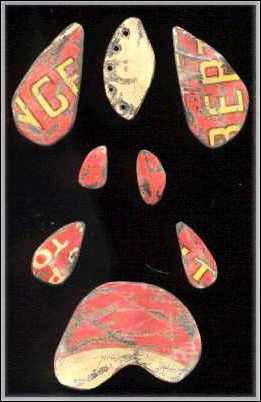
Next, appropriate fins were cut for the decoy from a vintage tin can.
This was (and still is) a common practice for working decoys..
_
__________________________________________________________________________________
__________________________________________________________________________________
_
.
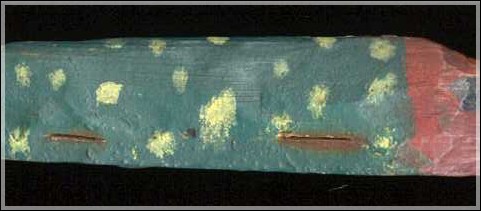
Sometimes the original fin slots can be used for mounting the new fins.
However, in this case, these slots were plugged by remnants of the original fins.
Therefore, the point of a thin knife blade was used to make new slots just above the old ones.
_
__________________________________________________________________________________
__________________________________________________________________________________
_
.
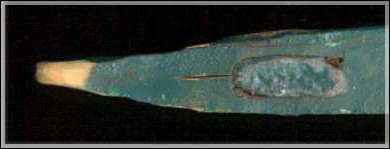 .
The original slots for the anal and adipose fins were clear and reusable..
_
__________________________________________________________________________________
__________________________________________________________________________________
_
.
.
The original slots for the anal and adipose fins were clear and reusable..
_
__________________________________________________________________________________
__________________________________________________________________________________
_
.
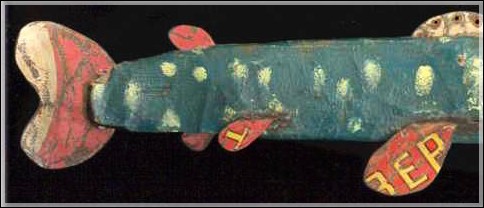
The new fins were then inserted into the slots and glued in place.
The knife blade was used to split the wooden tail just far enough for the tail fin to be inserted and glued in place.
Small nails or "pins" may also be used to anchor the tail and swim fins in place. This process is known as "pinning" the fins.
.
_
__________________________________________________________________________________
__________________________________________________________________________________
_
.
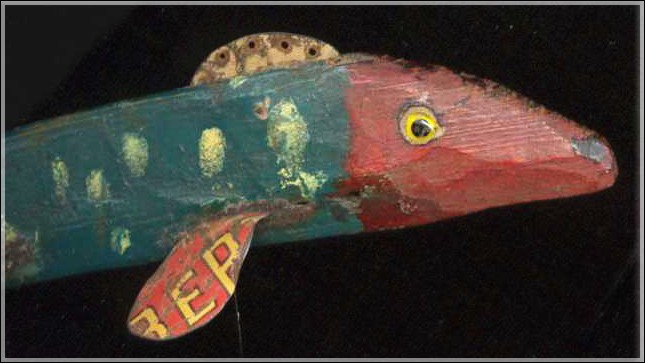
The knife point was again used to make a fine slot on top of the decoy to receive the new dorsal fin/line tie.
The holes in this line tie were drilled but a punch or nail was often used to do the job in the past.
The line tie was then both glued and pinned in place to withstand the strike of a big fish.
Shallow holes were made with a drill point to recieve the new glass eyes and they were glued in place.
.
_
__________________________________________________________________________________
__________________________________________________________________________________
_
.
 .
.
 .
.
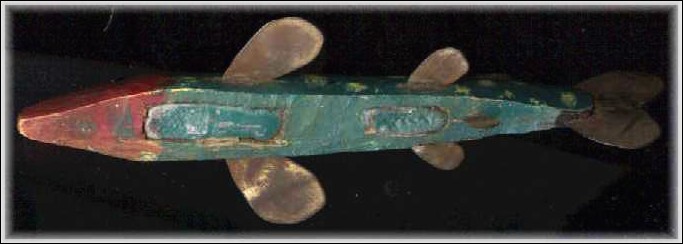 .
Since there was very little newly exposed wood, mixing and matching paint for touch up was not necessary.
Instead, a black permanent marker was used to cover the wood exposed in cutting the tail..
.
Since there was very little newly exposed wood, mixing and matching paint for touch up was not necessary.
Instead, a black permanent marker was used to cover the wood exposed in cutting the tail..
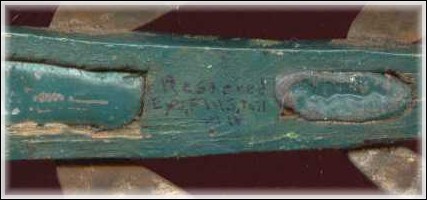 .
Finally the fish decoy was marked "Restored" on the bottom with the permanent marker.
.
_
__________________________________________________________________________________
__________________________________________________________________________________
_
.
.
Finally the fish decoy was marked "Restored" on the bottom with the permanent marker.
.
_
__________________________________________________________________________________
__________________________________________________________________________________
_
.
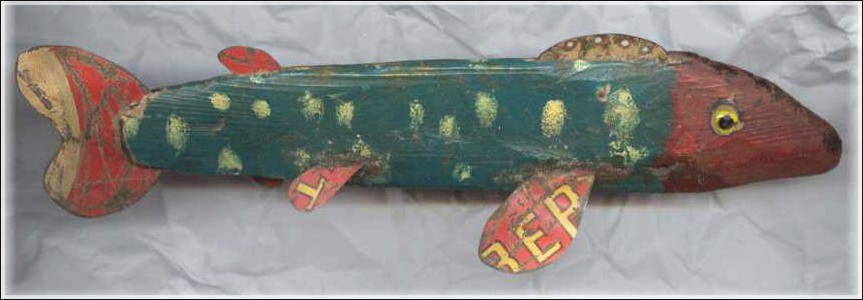 .
.

_
__________________________________________________________________________________
__________________________________________________________________________________
_
.
(More projects added from time to time. Please come again.).



(Copyright MHale 2006)






 ......
......














